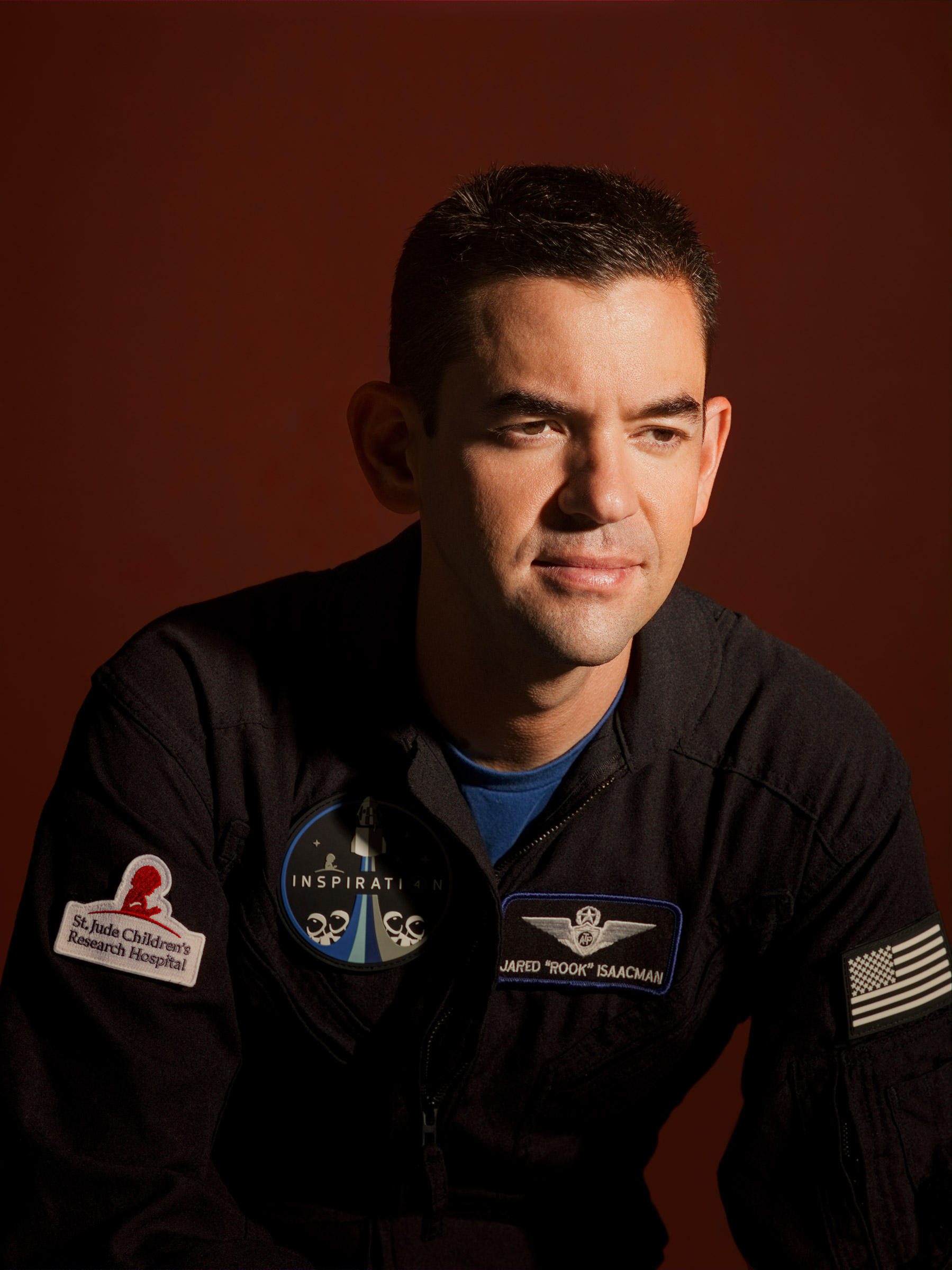TIME Studios is producing the Netflix documentary series Countdown: Inspiration 4 Mission to Space, starting Sept. 6.
Jared Isaacman is not likely to forget the day he almost died at 10,000 ft., back in 2011. He was flying closely alongside three others, all in L-39 fighter jets, tearing along at 460 m.p.h. over the desert southwest of Las Vegas.
The group, part of Isaacman’s Black Diamonds aerobatic team, was rehearsing for an air show and trying to come up with a flashy new finish. What they decided on called for flying in a square formation and then suddenly veering toward one another, before pulling back at the last second. It would be a nifty thing to watch go right—and a terrible thing to watch go wrong.
The pilots began the maneuver at their four separate corners and then banked in toward one another. But their coordination was a mess, and the fully fueled fighter jets came screaming toward one another.
“Holy sh-t,” exclaimed Isaacman over the radio. He yanked hard on his stick and veered sharply away; the others did the same. Shortly afterward, the Black Diamonds landed, gathered to debrief and reached three conclusions. First, they had gotten too close during the critical approach point. Second, the cause was most likely insufficient lateral spacing at the beginning. Third, they would never try such a high-stakes stunt again. Then they relaxed—and laughed.
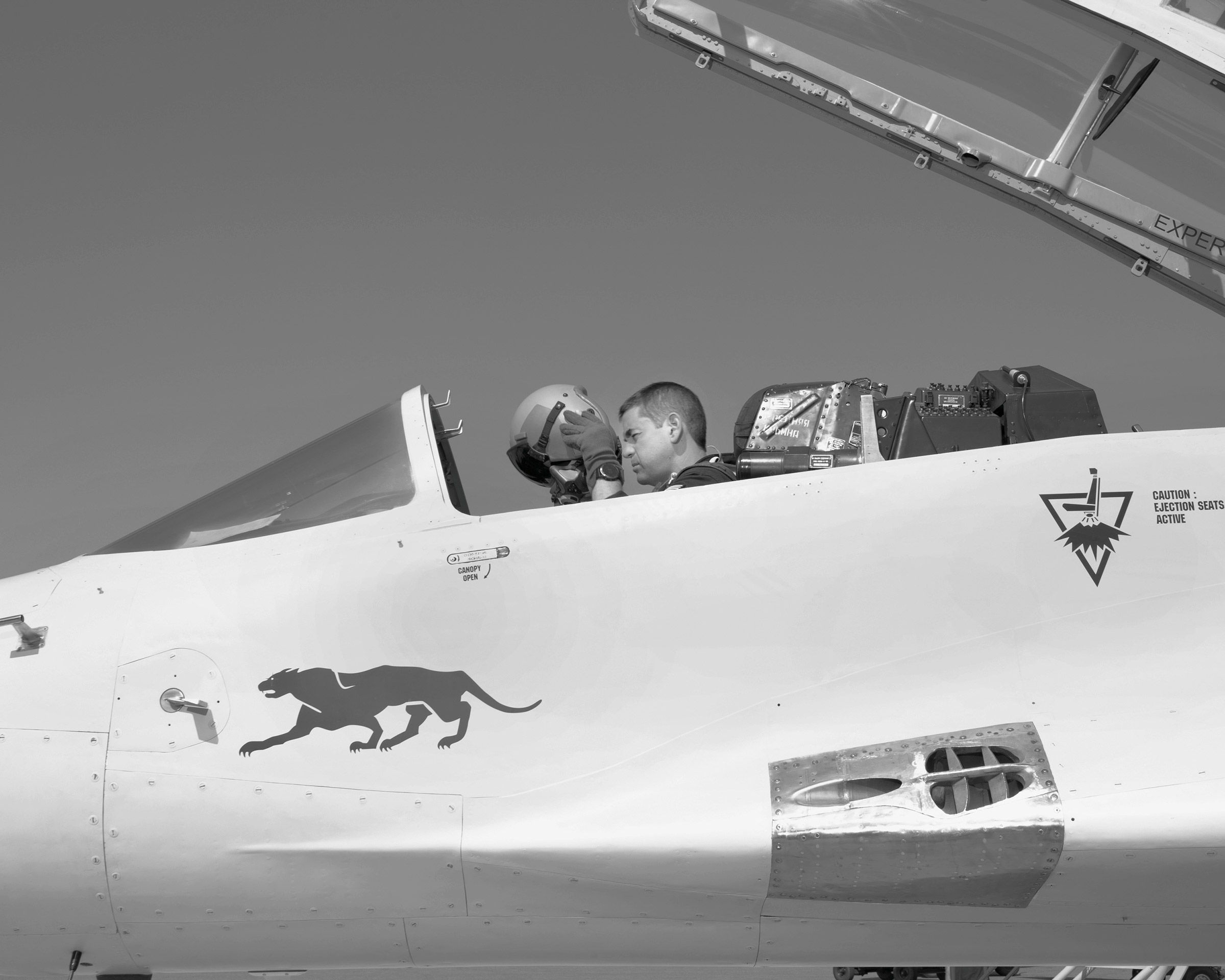
“When you survive it, you can joke about it later,” Isaacman says. “After we debriefed, we were imagining if you were just a hiker in the desert looking up and you’re like, ‘Oh, look at that.’ And then you see this collision. It would be most unusual.”
Most unusual is a decidedly understated way to describe one’s own near-death experience, but Isaacman—now 38 and the billionaire CEO of Shift4 Payments, an online—payment company, as well as the founder of Draken International, a company that runs what’s effectively the world’s largest private air force—has always prided himself on a certain sangfroid. He needed it that day in 2011, and he’ll need it again this Sept. 15, when he’s set to once again be part of a team of four trying something very daring.
This time, Isaacman’s crew won’t be flying at 10,000 ft., but a projected 360 miles up—higher than the Hubble Space Telescope. This time there won’t be four vehicles, but just one: a SpaceX Crew Dragon spacecraft. And this time the fliers won’t be moving at 460 m.p.h., but at 17,500 m.p.h., launched into space atop a 215-ft.-tall SpaceX Falcon 9 rocket.
The mission, dubbed Inspiration4, will mark the first time an all-civilian, non-governmental crew has taken to orbit. To make the mission possible, Isaacman bought all four seats aboard the Dragon for an undisclosed sum (likely in the vicinity of $50 million each). And if he has his way, it will begin to democratize space in a way never before possible.
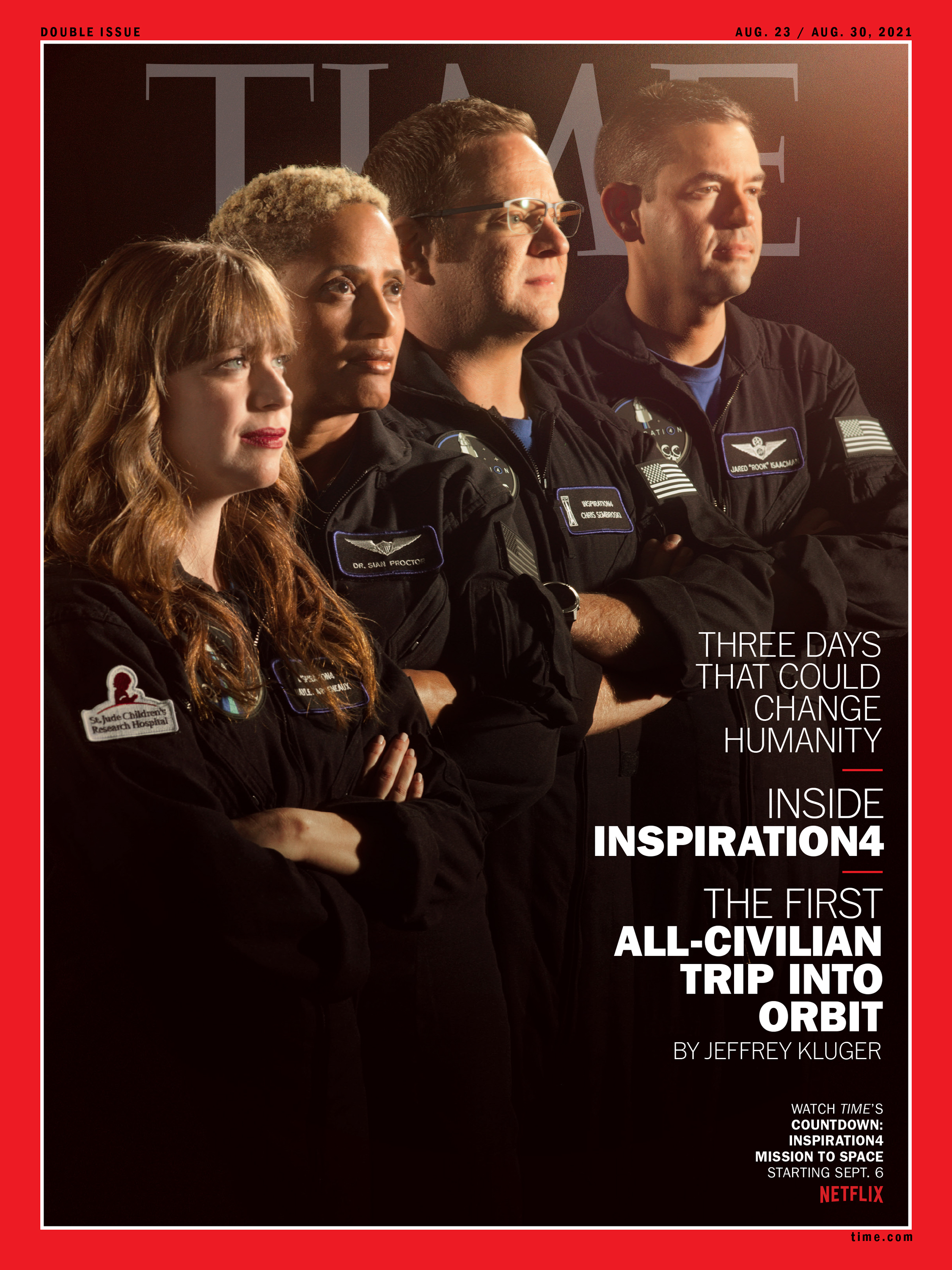
Get a print of TIME’s Inspiration4 cover here
“I could have just invited a bunch of my pilot buddies to go, and we would have had a great time and come back and had a bunch of cocktails,” Isaacman says. “Instead, we wanted to bring in everyday people and energize everyone else around the idea of opening up spaceflight to more and more of us.”
Isaacman’s mission will be the capstone of what has been America’s summer of civilian spaceflight. On July 11, Virgin Galactic founder Richard Branson flew aboard his V.S.S. Unity space plane more than 50 miles high over New Mexico, crossing the boundary that the U.S. military considers the threshold of space. On July 20, Blue Origin founder Jeff Bezos bested Branson, flying aboard his New Shepard spacecraft above the 62-mile-high mark over Texas—crossing the so-called von Karman line, the altitude that most experts consider space’s true boundary.
There has been much media sizzle around the Branson and Bezos missions, not least because of the “Billionaire Space Race” headlines. But in fact, the pair did not do a whole lot. Their flights were little more than 10-min. up-and-down suborbital lob shots. By contrast, Isaacman and his crew will spend three days in orbit, doing real science on a real mission. The SpaceX Dragon is largely automated, but as Isaacman puts it, “it’s a multiday orbital mission, and there’s just a lot of time for things to go wrong.” So the Inspiration4 crew has been in intensive training in case anything indeed goes wrong.
The business of selecting that crew was as unconventional as the mission itself. The world learned about Inspiration4 from a 30-sec. commercial Isaacman paid to run during the 2021 Super Bowl. The spot announced not only the flight but also Isaacman’s search for three other people to join him. One of Inspiration4’s goals is to help raise funds for the St. Jude Children’s Research Hospital in Memphis, and for that reason one of the four seats would go to a St. Jude employee. (Isaacman aimed to raise $200 million for the hospital; he donated $100 million and has so far raised an additional $13.1 million.) Another seat would be awarded through a simple lottery, which contestants could enter by making a contribution of any size to St. Jude. The final seat would be a little harder to win, with contenders designing an online store using Shift4 software and then developing a social media campaign to share their entrepreneurial and space aspirations.
The St. Jude worker is Hayley Arceneaux, 29, a physician assistant and a survivor of childhood cancer; she will be the first person to fly to space with a prosthesis—an artificial left femur that replaces the bone she lost to her disease when she was 10. The lottery winner is Chris Sembroski, 41, an engineer at Lockheed Martin in Everett, Wash., and a U.S. Air Force veteran who served in Iraq and who in a later domestic posting helped oversee a fleet of Minute-man nuclear missiles. The winner of the online-store competition is Sian Proctor, 51, a geosciences professor at South Mountain Community College in Phoenix and a two-time NASA astronaut candidate who in 2009 made it to the final 47 out of more than 3,500 candidates before being cut. Now, not only is she going to space, she’s going sooner than she might have on the traditional route. “At least one of the people chosen in that class in 2009 has not even had a chance to fly yet,” says Proctor.
Yet questions surround not only this mission but also the entire enterprise of civilian spaceflight. For one thing, space travel is expensive—and to many people, the money could be better spent on solving the manifold problems on earth. In an auction for a seat aboard Bezos’ flight, the winner—who later decided not to fly—bid $28 million. That could buy a lot of schoolbooks or feed a lot of hungry people.
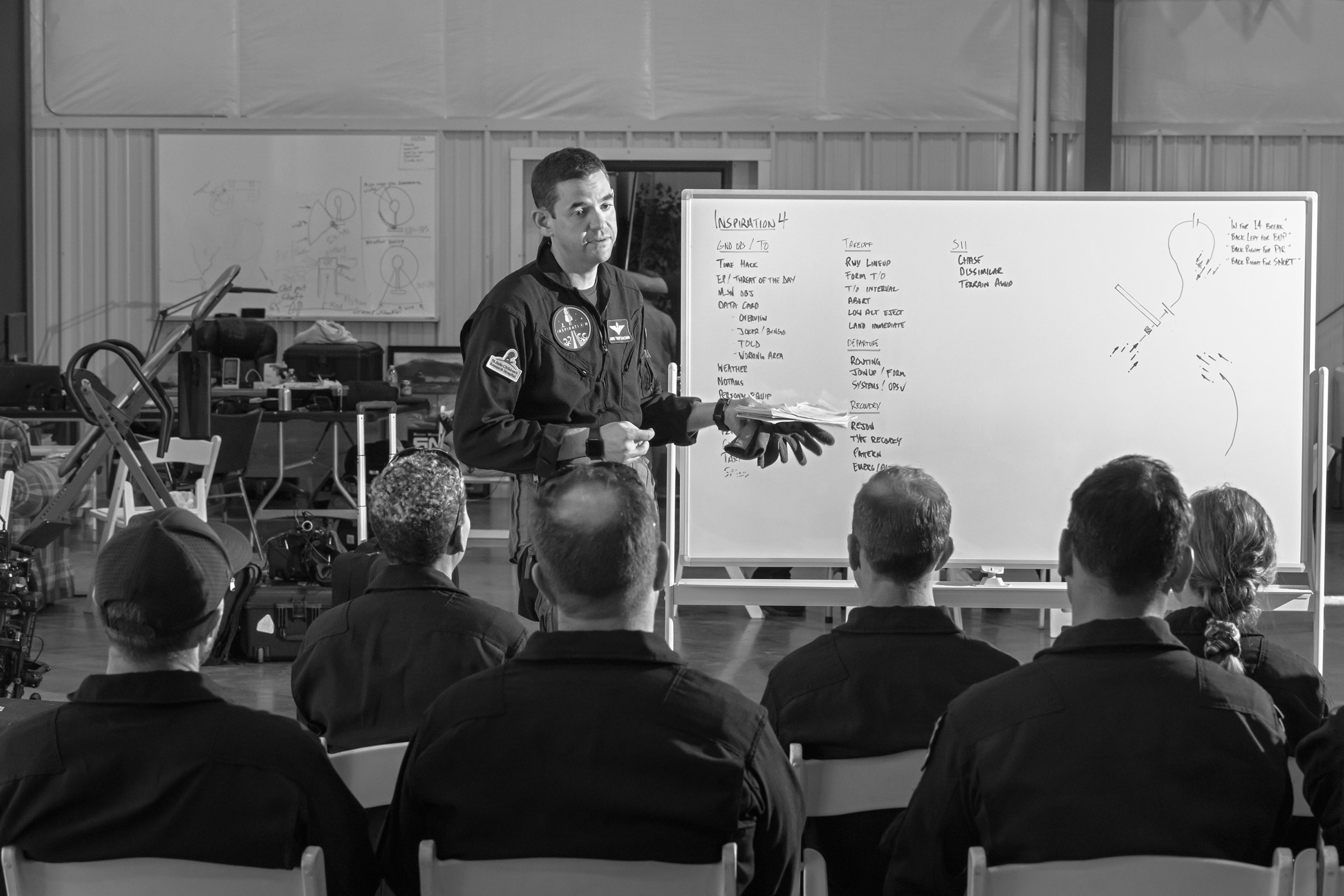
There’s also the question of safety. Space can be a murderous place, a lesson each generation seems to have to learn anew. In 1967, NASA’s Apollo 1 crew died in a launchpad fire that almost scuttled the country’s lunar program. In 1986 came the space shuttle Challenger disaster. Then, in 2003, the shuttle Columbia broke apart during re-entry. More than a few people worry that giddy ambition, human hubris and the limits of technology might conspire once again, just as we’re telling ourselves that the cosmic skies are safe for everyone.
“When there is a fatal accident,” says Terry Virts, a retired NASA astronaut and former International Space Station (ISS) commander, “and I wouldn’t say if, I would say when, that’s going to be a real concern.”
Isaacman sees things differently. “There’s always a risk that something goes wrong, like a structural failure,” he says. “But you have confidence in the whole system and the measures that have gone into place to minimize the risk. Sometimes you land when your knees are clanking together and you say you’re lucky to be alive. But you are—and you move on.”
It’s entirely possible there would have been no Shift4 Payments—never mind Inspiration4—if Jared Isaacman had been a more patient kid. The child of parents who were both on their second marriages, he came into the world with two half brothers and a half sister who are 15, 13 and nine years older. That chafed—not so much the business of being so junior a member of the sibling brood, but, as he reached his teens, at the privileges age afforded his siblings and the ones it denied him.
“They were out living their lives and I still had to raise my hand to use the restroom in school, and I was like, ‘This is ridiculous,'” he says.
Isaacman dropped out of high school in 1999, getting his GED to satisfy his parents. At the time, he and a high school classmate were trying to start their own computer and web business, but getting nowhere. So Isaacman went to work at tech retailer CompUSA, with the idea, he says, “that I could generate business and I could poach some customers.” As it turned out, a customer—a credit-card company called MSI—poached him to solve its IT problems.
“I worked there for about six months, and like a lot of people, I totally disliked one of my bosses,” he says. “I saw an opportunity to do things better and more efficiently, so I left there and started the company that I still run today.”
Isaacman named his new enterprise United Bank Card and slowly began generating a customer base from people he had met at MSI. The new company—which he set up in his parents’ basement—marketed hardware and software allowing restaurants, bars and other businesses to process credit and debit-card transactions, a hot business amid the digitize-everything mania of the late 1990s.
Over the past 22 years, Isaacman’s company has expanded and gobbled smaller firms—including one called Shift4, a name it took for itself (on a computer keyboard, holding shift and hitting 4 gets you a dollar sign). The company, now headquartered in Allentown, Pa., went public last year. It currently has 1,300 employees and a market capitalization of just over $7 billion. Today, if you go into any restaurant or bar in the U.S., there’s a 50% chance your transaction is being processed by Shift4 equipment and software. In hotels, it’s about a 40% chance.
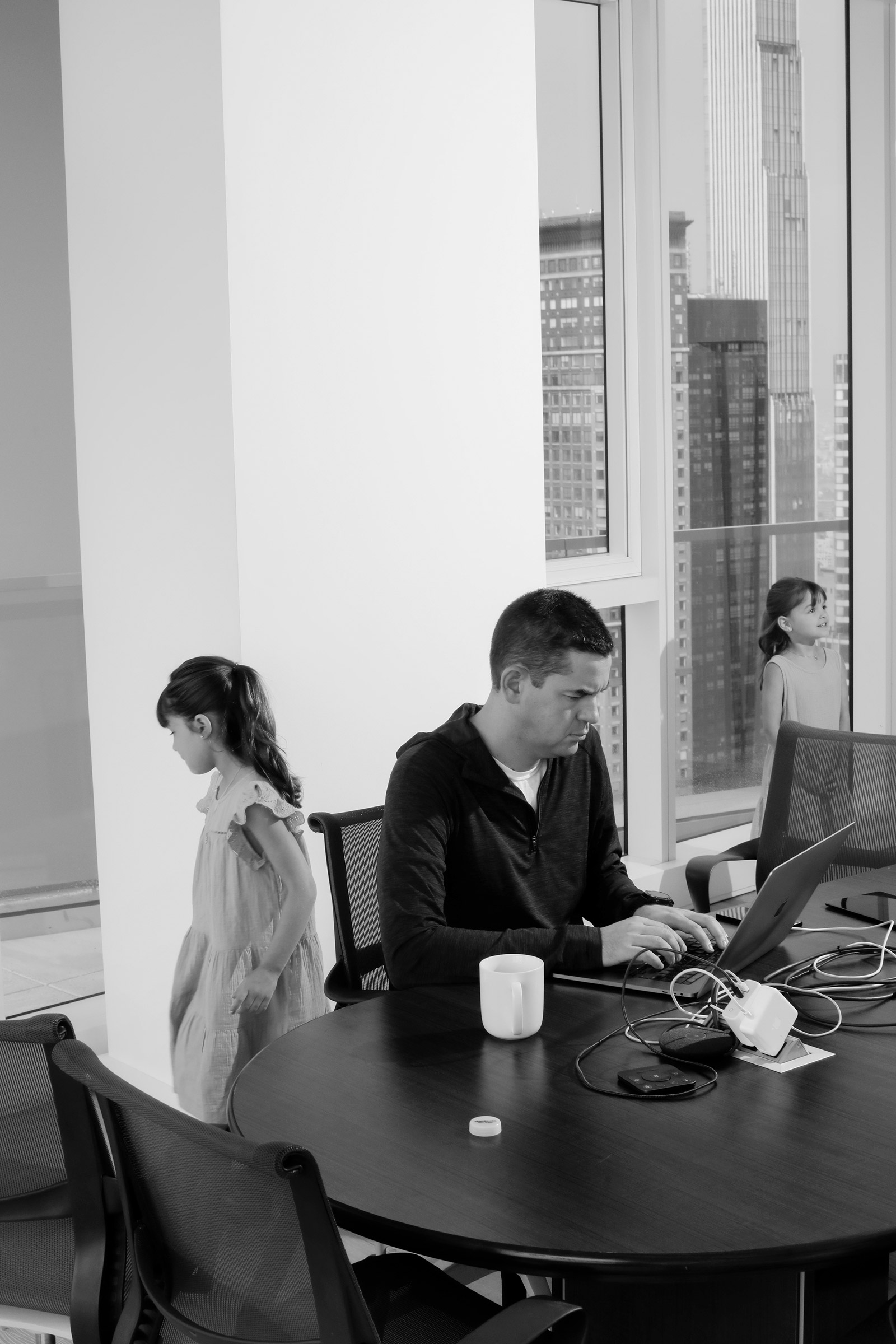
But Isaacman, as Shift4 chief of staff Terry Sullivan puts it, “doesn’t do things that sort of normal people do. He’s so full of ambition and just takes on these mountains of projects.”
One of those projects was the unusual business of assembling his own private air force, with over 100 combat jets acquired from half a dozen countries. The force—known as Draken after the Greek word for dragon, was formally founded as a private company in 2011; the U.S. military pays it to fly simulated dogfights with American pilots, training them against the kind of real weaponry that they could one day face in a genuine shooting war.
Draken was an outgrowth of Isaacman’s love of flying, nurtured when he was 12 years old and attended space camp in Huntsville, Ala., where his parents agreed to spend an extra $75 to let him take introductory flying lessons on a Cessna 172. Plenty of people who start with a Cessna stick with a Cessna, but Isaacman was hungrier than that. He eventually got certified in 20 civilian and military jets, including the Soviet MiG-29. He also re-enrolled in school, at Embry-Riddle Aeronautical University, in Daytona Beach, Fla., earning an undergraduate degree in aerospace studies in 2012 while also setting up his Black Diamonds team.
Even before founding Draken and the Black Diamonds, Isaacman was itching to fly much higher. In 2008, he was invited to the Baikonur Cosmodrome—which is in Kazakhstan, but functions essentially as Russia’s Cape Canaveral—to watch the launch of a Soyuz rocket that was carrying Richard Garriott, one of the world’s first paying space tourists.
“It was amazing,” says Isaacman. “I mean, watching any rocket go up is pretty incredible, but watching a Soyuz go up is something else. You’re in this trench that’s like 300 yd. away—it’s a par 3 away from the rocket. If you’re at Kennedy Space Center, the closest you’re going to get to a rocket going off is like three and a half miles.”
The next year, Isaacman approached SpaceX—which at the time was still more than a decade away from carrying its first crews to space—about buying a seat. A draft contract was hammered out, but it took SpaceX far longer than expected to get the go-ahead to fly human passengers, leaving the deal to languish and lapse. But in May of last year, SpaceX finally got its first two-person crew to the ISS, and Isaacman saw another opportunity.
“I think at some point or other, I might fly on one of your rockets,” he recalls telling a senior SpaceX official late last year. (Isaacman declines to disclose the names of any SpaceX officials with whom he has conducted discussions related to his mission.) To Isaacman’s surprise, the official responded directly—and encouragingly. “That may be coming along faster than you might think,” the official said. Indeed it did: four hours later, Isaacman was put in touch over email with the head of SpaceX’s human spaceflight program.
“We understand you might be interested at some point in going on a flight with us,” the program head told Isaacman on a follow-up call. “Well, you could be the first private passenger—and it could be inside of a year.”
The two reached a verbal handshake, and all that was left was for Isaacman to break the news to his family. His wife Monica was not surprised. They’ve been together for 20 years, and she knew this was something he’d been hankering to do for a long time. She agreed straightaway. For the couple’s two daughters, ages 7 and 5, the notion is more fanciful than real. “To them, space is all Baby Yoda at this point,” Isaacman says.
For the Inspiration4 crew, the past five months have been a flat-out sprint to their planned September launch. Isaacman, who assigned himself the position of commander, wants a tight, professional and prepared crew. He personally designed part of the training program, which in part called for flying each crew member in his Soviet MiG-29, exposing them to the kinds of g-forces they’ll experience during liftoff and re-entry. Also on the agenda was a two-day hike up to 10,000 ft. on Mount Rainier in Washington State this past April.
“We got snowed on a lot of the way,” says Arceneaux, the St. Jude physician assistant, who made the hike despite her prosthetic femur. “And our ham-and-cheese sandwiches wound up frozen.”
“The constant plodding upward really did me in,” says Sembroski, the engineer. “My legs were on fire.”
That, in some ways, was the whole idea. “We want to get comfortable with being uncomfortable,” Isaacman says. “A lot of things in the spacecraft will be uncomfortable, after all.”
The rest of their training has mostly involved the usual NASA-style simulator and classroom work, only on a compressed timeline. On a recent day at SpaceX headquarters in Hawthorne, Calif., the crew practiced opening and closing the hatch, what to do in the event of a pressure leak in the hatch seal, techniques for earth observation, and splashdown and recovery procedures—and that was all before lunch.
“I’m used to doing things on NASA time, which gives you two years to train for a mission,” says Proctor. “We have from March to September.”
Once in space, the crew will be kept busy. Proctor will be the pilot—effectively Isaacman’s second in command and responsible for calling up checklists, monitoring systems and executing commands. Sembroski is mission specialist, responsible for repairs as well as proper stowing of cargo to avoid weight and balance issues. Arceneaux is the chief medical officer and will oversee most of the scientific experiments; she’ll take blood samples, for instance, to study the crews’ microbiomes.

For all of the mission’s ambition, there remains the question of whether civilian astronauts ought to be flying to space at all. For one thing, the notion that the Bezos, Branson and Inspiration4 flights represent a great opening of the space door assumes that everyone can afford the quarter-million dollars Branson charges or the $50 million or so that the Inspiration4 seats probably cost. It’s possible that costs will fall as the industry grows. But even if the price tag of a Branson mission were slashed by 80%, that’s still $50,000 for 10 minutes in space.
Then there’s that matter of whether that money could be better spent on earth. Of course, any single dollar spent on any enterprise—Silicon Valley tech, auto manufacturing, sports stadiums—could instead be spent on humanitarian causes. Yet space, to many, feels more frivolous, and thus gets hit harder by critics. But some say the case against space spending doesn’t hold up.
“These people—Bezos and Branson and Isaacman—aren’t spending money on themselves,” says John Logsdon, the founder of the Space Policy Institute at George Washington University. “They’re spending money to create a business; these are business investments that create jobs and bolster the economy. If they’re successful, they’re risking their own money to build those businesses. Well, that’s capitalism, right?”
There’s also the question of safety. Isaacman often points out that it took only 12 years after Charles Lindbergh’s solo trip across the Atlantic before Pan Am introduced commercial transatlantic service. But physics has a say in this too. Commercial air service does not require the 4.9-mile-per-second speeds it takes to orbit earth, it does not regularly subject passengers to four g’s, and it does not require passengers to climb atop the controlled bomb that is a Falcon 9 rocket. People have died in space; people have died merely trying to get to space—but always in the service of a larger scientific and geopolitical mission. If people die in the service of something that seems less noble, the space market as a whole could dry up as fast as the dirigible business did following the Hindenburg disaster.
That kind of mortal danger attends all space flights, but Isaacman and his crew seem to have already priced it into their thoughts about the mission. They say they are confident that the hardware they’re flying will take them to and from space safely. And with good reason: the Falcon 9 rocket has been successfully launched more than 120 times, and while the Crew Dragon is a newer spacecraft, with only three crewed missions, it has flown admirably so far (Dragon has also flown more than 20 equally successful uncrewed missions).
“I have so much faith in our SpaceX team that I’m not nervous about a poor outcome,” says Arceneaux. “I’ve met the lead engineers for every aspect of our mission, and they know what they’re doing. Inspiration4 is in wonderful hands.”
Isaacman is equally confident. “You just accept there’s a very, very low probability of something going wrong,” he says.
He should know. He’s come back from harrowing flying before—and space, he’s convinced, is an order of magnitude safer than air shows. His concern, he says, is more about performance. If Inspiration4 won’t in fact kick the door to space travel wide open, allowing the rest of us to pour through after, it can at least crack that door, coming just a little closer to normalizing rocket travel and democratizing space. For Isaacman, that carries with it not just a responsibility to his crew, but to history to get the mission right.
“I am constantly thinking about good execution,” he says. “We have to fly well; we have to earn the right to be here.”
Correction: The original version of this story misstated the type of aircraft the Black Diamonds team was flying in 2011. They were flying L-39s, not F-14s.
TIME Studios is producing the Netflix documentary series Countdown: Inspiration 4 Mission to Space, starting Sept. 6.
Read More About the Inspiration4 Mission:
More Must-Reads From TIME
- The 100 Most Influential People of 2024
- Coco Gauff Is Playing for Herself Now
- Scenes From Pro-Palestinian Encampments Across U.S. Universities
- 6 Compliments That Land Every Time
- If You're Dating Right Now , You're Brave: Column
- The AI That Could Heal a Divided Internet
- Fallout Is a Brilliant Model for the Future of Video Game Adaptations
- Want Weekly Recs on What to Watch, Read, and More? Sign Up for Worth Your Time
Write to Jeffrey Kluger at jeffrey.kluger@time.com
